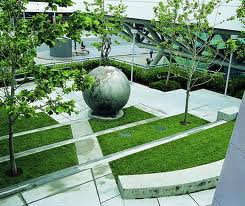Cultural Considerations in the identification, monitoring and control of pollution sources and its environmental impacts on urban spaces
Keywords:
Waste material, industrial and technological development, pollution, disposal and recycling, environmentalAbstract
Municipal waste management in our country in order to control solid waste,especially industrial, toxic and dangerous waste seems an inevitable task.Thousands of tons of waste generated in different parts of the country with itspollution, is a problem that should be placed at the forefront of environmentaland health programs of the country due to population growth and the developmentof industry and technology. Emissions of different wastes that are being addedevery day while causing damage to the original sources (water, soil, air) hasled to encountering large amounts of waste material in the forms of solid,semi-solid, liquid and gas and that means that human beings have made their andother beings' life a hell. The collection, disposal, recycling and solid wastemanagement in Iran is significantly different from other countries in the worldin the type and quality of waste, so using any technology without exact studiesand evaluation in order to understand material and adaptation with localfactors would not have favorable results. On the one hand, existence of organicmaterial and moisture in the household waste, and on the other hand, thedramatic differences in climate and environmental conditions in differentregions of the country with their own unique style and culture, are themselvesreason for rejecting the uncontrolled use of technology dependent on outside.Experience of years of recession in the processing compost and payment ofexpenses for waste collection and disposal indicate the importance of thisissue in the environmental programs in the country. For this reason, and giventhe importance of this issue we will in part address the practical hazards non-normativewaste disposal and its environmental impacts.
References
Abdoli, M.A., Majlesi, M., 1991. Solid Waste Management, Engineering Principles and Management Issues, Tehran
Municipality. Recycle. Convers. Mater., 827 pages.
Ghazban, F., 2002. Environmental Geology, Tehran University, Institute of Publishing and Printing, 416 pages.
Mahmoudi, S.h., Hakimian, M., 5831. Soil foundations, Institute of Tehran University Publications and Printing. 3.
Malekooti, M. J, )5835),Sustainable agriculture and improving performance by optimizing the use of fertilizers in
Iran. Dissem. agr. educat., First edition. 33.
Marjavi, A., Jahad Akbar, M.R., 5835., Investigating the effects of municipal compost on soil chemical properties
and quantitative and qualitative characteristics of plants.
Mazinani, H., Saeed, G.h., 5838. A brief look at developments in compost production in Tehran. Publicat. recov.
transformat. organizat. 3.
Rahimian Mashhadi, H., 585. Crop Physiology completion. Mashhad Univ. Press, 55 pages.
Tataro, A., Asefi, A., 585. The final report of the research project of the effects of compost resulting from the
conversion of organic wastes in Tehran in crops growing.
The book of 50 simple ways to save the planet. translated by Professor Reza Jamalian.

Published
How to Cite
Issue
Section
Copyright (c) 2020 Karim Husseinzadeh Dalir, Mahdiyeh Nakhaee

This work is licensed under a Creative Commons Attribution-NonCommercial-NoDerivatives 4.0 International License.



